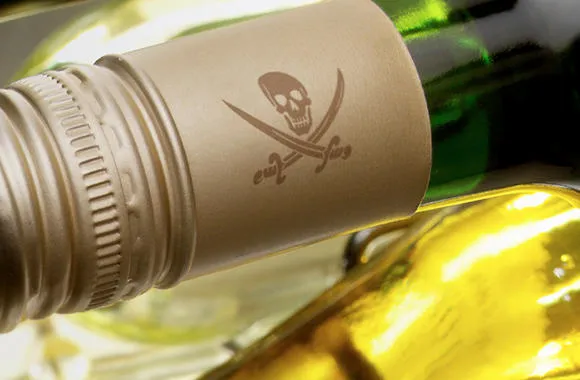Counterfeit drinks can be deadly
As recently as 2012, 40 people lost their lives in the Czech Republic after drinking counterfeit vodka and rum. It had been laced with methanol. At least one person in the UK is thought to have died from the same cause.
In 1998 EU customs officials seized one million items of counterfeit alcohol. Flash forward to 2008 and that number was 250 million. A report produced by the University of Portsmouth in 2014 estimates that culinary fraud costs UK food and drink manufacturers £11.2 billion per year.
Counterfeit criminals are highly organised
These are not amateur operations. Sophisticated criminals can expertly replicate bottle labelling so that to the untrained eye the results are often indecipherable from the genuine article. And the impact to manufacturers from fake produce may be more direct than you think. In some circumstances the brand can be held accountable for damage caused by counterfeits – which could mean legal fees and compensation on top of the harm to brand reputation.
Governments fight back – targeting drinks industry’s central nervous system
In recent years, government legislation has become increasingly more stringent. There is pressure on every party in the supply chain to incorporate systems that track and trace produce at ever more micro levels.
Battling counterfeit criminals depends on efficient coding and marking of your product and packaging at every stage in the supply chain. Producers, distributors, wholesalers, exporters and importers must be able to identify suppliers and customers. That requires resilient coding that can be read by all parties.
End-to-end traceability, on demand.

How coding technology makes it easy for manufacturers to keep up
Today you can choose from enterprise-level coding technologies, ready to tackle any conceivable challenge in the supply chain. Tracking codes can be applied to a huge range of materials including glass, plastics, films and foils. Printers can flip between different sets of packaging instantly. All without delaying production times.
This is vital, especially when it comes to point-of-sale packaging.
POS packaging is often used as a brand differentiator, helping a product to stand out on the shelf. But its role in tackling counterfeit crime should not be overlooked. After all, counterfeit criminals are unlikely to replicate a bottle’s secondary packaging as well as its labelling. It means secondary packaging is not just a point of differentiation for the manufacturer, but a means of reassuring the customer about the authenticity of the contents.
Of course, efficient coding of primary, secondary and tertiary packaging is useless without a system that allows it to be read. Technology has accelerated dramatically there too, with modular IT systems that make light work of tracking batch lots throughout the supply chain.
When you know you are compliant, you can concentrate on quality
Continual development of specific legislation to tackle the problem of counterfeit beverages is vital. But it has the potential to significantly hamper production and puts strain on manufacturers that rely on low margins and high volume. Thankfully, the leaps in printing technology make it easy for drinks manufacturers to work in full compliance, without holding up the production line.
Got questions on coding and marking in the drinks industry?